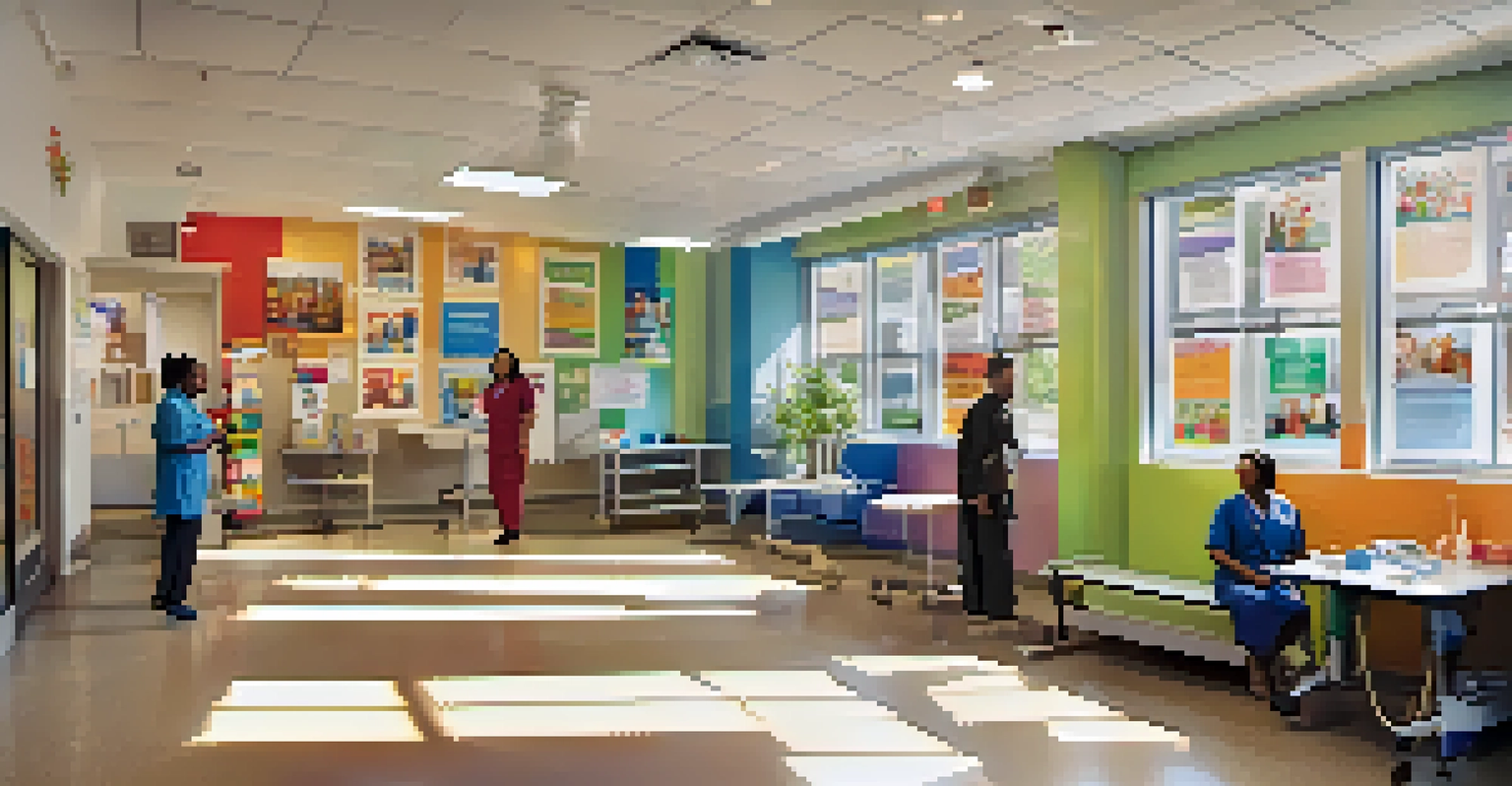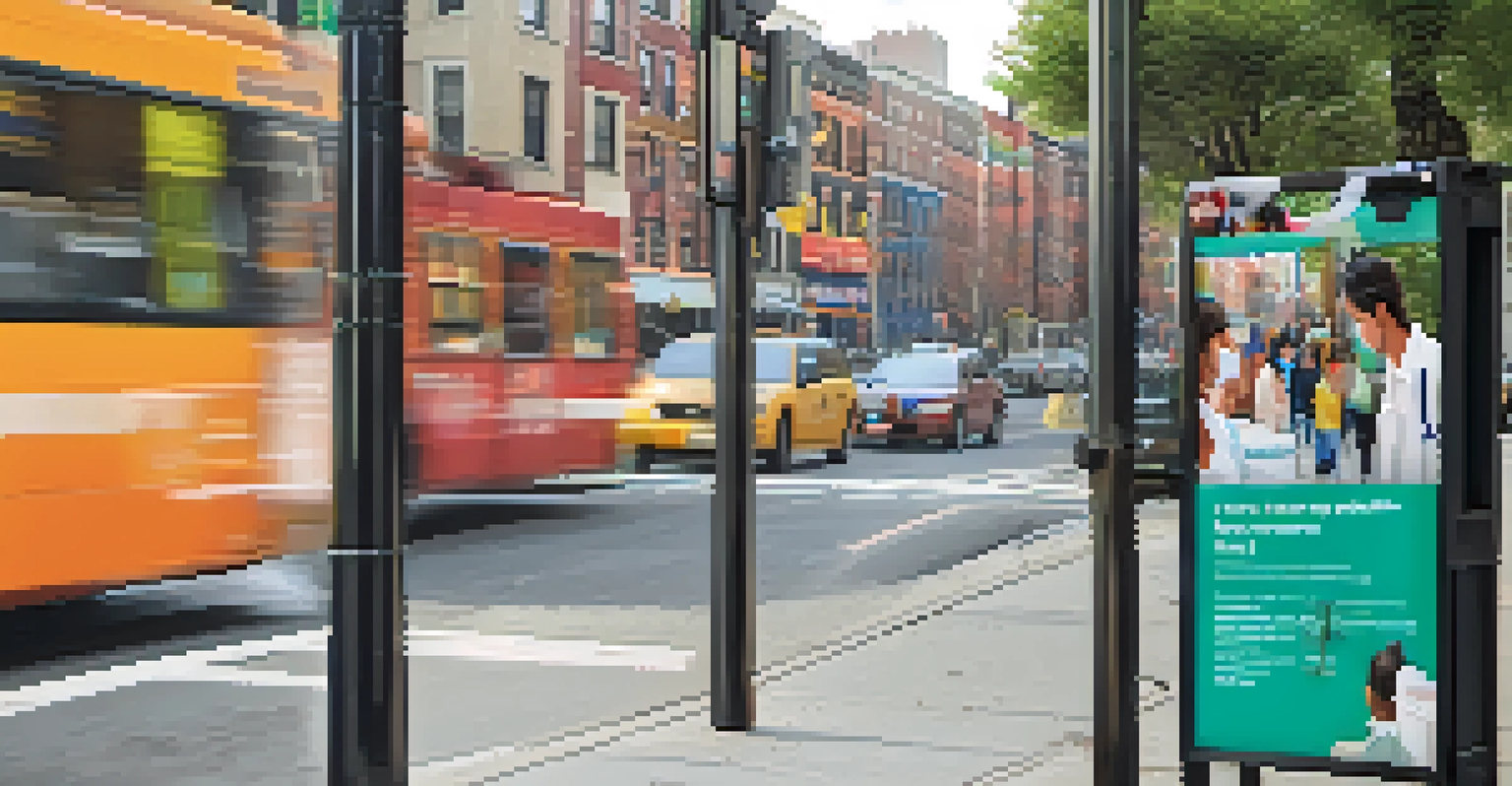Health Disparities in NYC: Lessons Learned from COVID-19

Understanding Health Disparities in NYC's Diverse Population
Health disparities refer to the differences in health outcomes among various population groups. In NYC, these disparities can often be linked to socioeconomic status, race, and access to healthcare. The city's rich tapestry of cultures means that health challenges can vary dramatically from one neighborhood to another, highlighting the need for tailored approaches.
Health equity means that everyone has a fair and just opportunity to be as healthy as possible.
For example, communities in low-income areas often face barriers like inadequate healthcare facilities and lack of health insurance. This can lead to a higher prevalence of chronic diseases, such as diabetes and hypertension, which were exacerbated during the pandemic. Understanding these disparities is crucial for developing effective public health strategies.
COVID-19 served as a magnifying glass, revealing the vulnerabilities of these communities. The virus did not discriminate, but its impacts certainly did, affecting marginalized groups more severely. The lessons learned during this time can guide future health interventions and policies.
The Role of Socioeconomic Factors in Health Outcomes
Socioeconomic factors play a significant role in determining health outcomes in New York City. Individuals with lower incomes often face challenges that include limited access to nutritious food, safe housing, and quality healthcare. These factors contribute to poorer health outcomes and increased susceptibility to diseases like COVID-19.

As the pandemic unfolded, it became clear that those in lower-income neighborhoods were not only more likely to contract the virus but also to experience severe complications. For instance, essential workers, many of whom are from these communities, had to continue working in-person, increasing their exposure risk. This situation highlighted the urgent need for systemic changes.
Health Disparities in NYC Exposed
The COVID-19 pandemic revealed significant health disparities in NYC, particularly among low-income and marginalized communities.
Addressing these socioeconomic disparities requires a multifaceted approach, including policy changes, community support programs, and enhanced access to healthcare services. By focusing on these areas, we can help break the cycle of poor health outcomes in vulnerable populations.
Racial and Ethnic Disparities in Health During the Pandemic
Racial and ethnic disparities in health have been a long-standing issue in NYC, and COVID-19 brought these disparities to the forefront. Data showed that Black and Hispanic communities faced significantly higher infection and mortality rates. This situation was often attributed to existing health inequities and systemic discrimination.
We cannot solve our problems with the same thinking we used when we created them.
The pandemic underscored how factors like housing density, access to healthcare, and underlying health conditions contribute to these disparities. For instance, communities of color are more likely to live in crowded conditions, making social distancing challenging. This reality compounded the risk of virus transmission and poor health outcomes.
Addressing racial and ethnic health disparities requires a concerted effort to dismantle systemic barriers and ensure equitable access to healthcare resources. Community outreach, culturally competent care, and targeted health education can play vital roles in fostering better health outcomes.
Healthcare Access Challenges Exposed by COVID-19
The COVID-19 pandemic exposed significant challenges in accessing healthcare services across NYC. Many individuals, especially those in underserved communities, faced hurdles in obtaining timely medical care. Issues such as lack of transportation, fear of seeking care, and language barriers hindered many from receiving necessary treatments.
Telehealth became a lifeline during the pandemic, allowing some people to connect with healthcare providers without the need for in-person visits. However, not everyone had equal access to technology or the internet, leaving many in vulnerable populations without adequate care. This digital divide further exacerbated existing health disparities.
Impact of Socioeconomic Factors
Socioeconomic status plays a crucial role in health outcomes, with lower-income individuals facing increased health risks and barriers to care.
To improve healthcare access, cities must invest in infrastructure that facilitates both in-person and virtual healthcare options. By ensuring that all residents have the means to access medical care, we can work towards a more equitable health system.
The Impact of Public Health Messaging on Vulnerable Communities
Effective public health messaging is crucial, especially in times of crisis like the COVID-19 pandemic. However, many vulnerable communities in NYC received inconsistent or unclear communications regarding health guidelines and resources. This inconsistency led to confusion and mistrust, further complicating the public health response.
For example, messages that failed to consider cultural differences or language barriers often missed the mark. Information that is not relatable or understandable can leave communities feeling alienated and hesitant to follow health guidelines. It's essential for public health campaigns to engage with community leaders to craft messages that resonate.
Building trust through transparent and culturally sensitive communication can significantly improve health outcomes. When communities feel informed and included, they are more likely to adhere to health guidelines and seek care when needed.
Lessons from COVID-19: Building Resilience in Healthcare Systems
The COVID-19 pandemic highlighted the need for resilience in healthcare systems, particularly in urban environments like NYC. As hospitals became overwhelmed, it became clear that preparedness and adaptability are essential for managing public health crises. Learning from these experiences can help build stronger healthcare systems for the future.
One lesson learned is the importance of investing in community health programs that address the unique needs of diverse populations. By strengthening local healthcare resources, communities can respond more effectively to future health challenges. This proactive approach can ultimately save lives and improve overall health outcomes.
Need for Equitable Healthcare Access
To address health disparities, NYC must implement policies that ensure equitable access to healthcare and resources for all residents.
Moreover, fostering collaboration between public health agencies, community organizations, and healthcare providers can lead to more comprehensive and effective responses. By working together, we can create a more resilient healthcare landscape that prioritizes equity and accessibility.
Looking Ahead: Policy Changes for Health Equity in NYC
As we reflect on the lessons learned from COVID-19, it's crucial to advocate for policy changes that promote health equity in NYC. Policymakers need to prioritize funding for health programs that address the social determinants of health, such as housing, education, and employment. These investments can create a solid foundation for healthier communities.
Additionally, implementing policies that ensure equitable access to healthcare and preventative services can help mitigate health disparities. This includes expanding health insurance coverage and increasing the number of community health centers in underserved areas. By making these changes, we can ensure that everyone has the opportunity to lead a healthy life.

Ultimately, the goal is to create a healthcare system that not only responds to crises but also actively works to prevent them. By learning from the challenges of the pandemic and advocating for meaningful change, we can foster a healthier, more equitable future for all New Yorkers.